#science is facts
Explore tagged Tumblr posts
Text
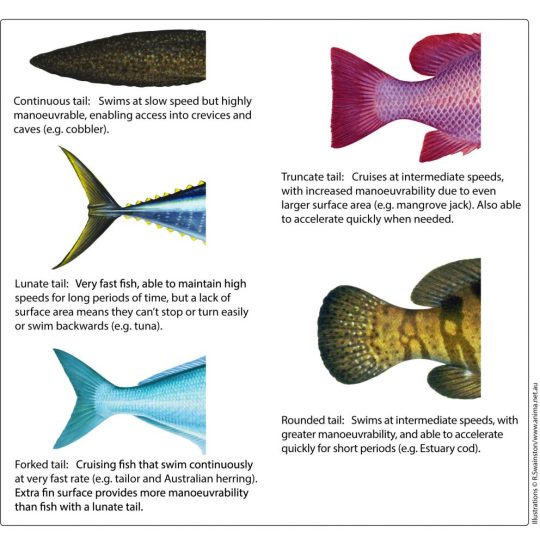
The shape of a fish's caudal tail can tell you a lot about how fast the fish moves! A rounded tail is the slowest and a lunate tail is the fastest! The lunate tail has the most optimal ratio of high thrust and low draw, making it the fastest.
Ichthyology Notes 2/?
#marine biology#science#biology#wildlife#marine life#ocean#animals#marine ecology#animal facts#fun facts#fish#fishies#zoology#fish anatomy#anatomy#fish facts#ichthyology
31K notes
·
View notes
Text

8K notes
·
View notes
Text
Scientists once thought that ADHD symptoms were always present. But previous research from Rapport, who has been studying ADHD for more than 36 years, has shown the fidgeting was most often present when children were using their brains' executive functions, particularly "working memory." That's the system we use for temporarily storing and managing information required to carry out complex cognitive tasks such as learning, reasoning and comprehension.
Here’s full study: https://www.eurekalert.org/news-releases/478386
If you enjoyed this post, please give it a ❤️ and check out @scienceisdope for more science and daily facts.
64K notes
·
View notes
Text
playing science telephone
Hi folks. Let's play a fun game today called "unravelling bad science communication back to its source."
Journey with me.
Saw a comment going around on a tumblr thread that "sometimes the life expectancy of autism is cited in the 30s"
That number seemed..... strange. The commenter DID go on to say that that was "situational on people being awful and not… anything autism actually does", but you know what? Still a strange number. I feel compelled to fact check.
Quick Google "autism life expectancy" pulls up quite a few websites bandying around the number 39. Which is ~technically~ within the 30s, but already higher than the tumblr factoid would suggest. But, guess what. This number still sounds strange to me.
Most of the websites presenting this factoid present themselves as official autism resources and organizations (for parents, etc), and most of them vaguely wave towards "studies."
Ex: "Above And Beyond Therapy" has a whole article on "Does Autism Affect Life Expectancy" and states:

The link implies that it will take you to the "research studies" being referenced, but it in fact takes you to another random autism resource group called.... Songbird Care?

And on that website we find the factoid again:

Ooh, look. Now they've added the word "some". The average lifespan for SOME autistic people. Which the next group erased from the fact. The message shifts further.
And we have slightly more information about the study! (Which has also shifted from "studies" to a singular "study"). And we have another link!
Wonderfully, this link actually takes us to the actual peer-reviewed 2020 study being discussed. [x]

And here, just by reading the abstract, we find the most important information of all.

This study followed a cohort of adolescent and adult autistic people across a 20 year time period. Within that time period, 6.4% of the cohort died. Within that 6.4%, the average age of death was 39 years.
So this number is VERY MUCH not the average age of death for autistic people, or even the average age of death for the cohort of autistic people in that study. It is the average age of death IF you died young and within the 20 year period of the study (n=26), and also we don't even know the average starting age of participants without digging into earlier papers, except that it was 10 or older. (If you're curious, the researchers in the study suggested reduced self-sufficiency to be among the biggest risk factors for the early mortality group.)
But the number in the study has been removed from it's context, gradually modified and spread around the web, and modified some more, until it is pretty much a nonsense number that everyone is citing from everyone else.
There ARE two other numbers that pop up semi-frequently:
One cites the life expectancy at 58. I will leave finding the context for that number as an exercise for the audience, since none of the places I saw it gave a direct citation for where they were getting it.
And then, probably the best and most relevant number floating around out there (and the least frequently cited) draws from a 2023 study of over 17,000 UK people with an autism diagnosis, across 30 years. [x] This study estimated life expectancies between 70 and 77 years, varying with sex and presence/absence of a learning disability. (As compared to the UK 80-83 average for the population as a whole.)
This is a set of numbers that makes way more sense and is backed by way better data, but isn't quite as snappy a soundbite to pass around the internet. I'm gonna pass it around anyway, because I feel bad about how many scared internet people I stumbled across while doing this search.
People on quora like "I'm autistic, can I live past 38"-- honey, YES. omg.
---
tl;dr, when someone gives you a number out of context, consider that the context is probably important
also, make an amateur fact checker's life easier and CITE YOUR SOURCES
6K notes
·
View notes
Text

Have you ever seen a white Common Raven (Corvus corax)? No, this isn’t a new species… or a ghost. 👻 This Raven’s striking pale plumage is the result of the genetic mutations leucism or albinism. Leucism is a reduction in all types of pigmentation, including melanin. Albinism is the inability to produce or distribute melanin. One hint to tell the difference? Individuals affected by leucism often have blue eyes, while individuals with albinism have pink eyes. White Common Ravens are rare. An estimated 1 in 30,000 individuals is born without this species’ signature black plumage.
Photo: Cos van Wermeskerken, CC BY-NC 4.0, iNaturalist
#science#nature#natural history#animals#fact of the day#did you know#cool animals#albinism#leucism#raven#ornithology#birds#white raven
5K notes
·
View notes
Text
Please reblog for further reach!
If you liked this uquiz, please check this out.
#tumblr polls#tumblr poll#poll#marine biology#marine life#uquiz#quiz#science facts#because of the link at the bottom of the post this is also a d*nation booster- so pls reblog
6K notes
·
View notes
Text
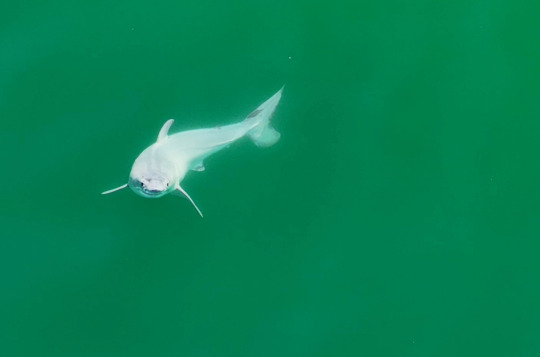
Exciting news for the cute shark lovers of the world! We finally have a recorded sighting of a baby great white shark, likely only a few hours old.
The question of where great white sharks give birth still remains a mystery to this day but this footage may suggest the coasts of California, where the footage was taken, are a site where these sharks give birth.
#marine animals#marine biology#shark#sharks#shark facts#fish facts#sharkblr#fish#fun facts#science#science news#great white shark
9K notes
·
View notes
Text


Rip the streak... 😔
#I like to imagine the gaster followers as like#past memebers of Gaster's science crew#I also just thought it'd be fun to see how they'd look before they get greyscaled#sans#sans the skeleton#gaster#w.d gaster#sans undertale#undertale gaster#undertale#ignore the fact that I forgor the whiskers on the second panel#gaster followers#gaster follower 2#gaster follower 1#my works
5K notes
·
View notes
Text

#lol#memes#funny#humor#haha#facts#mental health#tweet#twitter#solar eclipse#eclipse#astronomy#science
7K notes
·
View notes
Text


(NEW UPDATE WITH PHOTOS) Send us your best photos!
Absolutely beautiful! I hope everyone took this in! Makes you think just how small we are. A moment the world comes together as one! That’s true humanity . We will be uploading more amazing photos to this same post. So come back later on and check out our 2024 once in a lifetime eclipse photos.

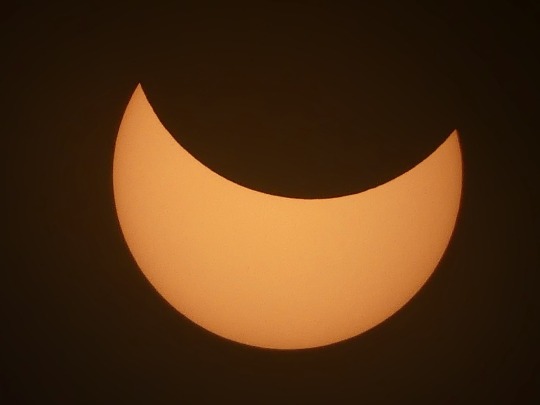
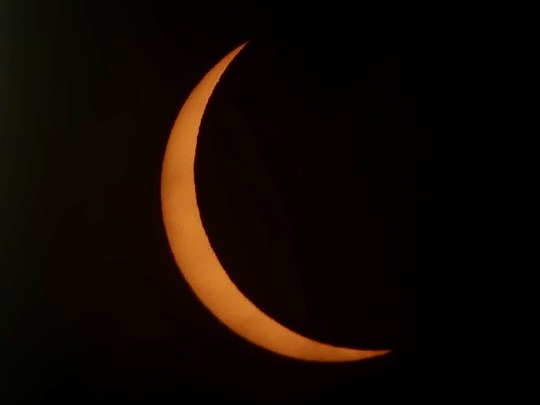
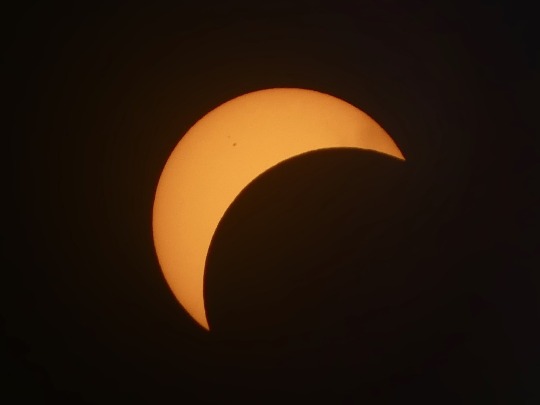




#solar eclipse#eclipse 2024#2024#astronomy#astronomers#nasa#universe#astrophotography#nasa photos#astrophysics#outer space#nasawebb#hubble space telescope#i love astronomy#astronomy facts#astrography#astrobiology#astronauts#astro community#space program#planetary science#planetary nebula#international space station#space exploration#space#science facts#space science#sci#astro notes#astro observations
6K notes
·
View notes
Text

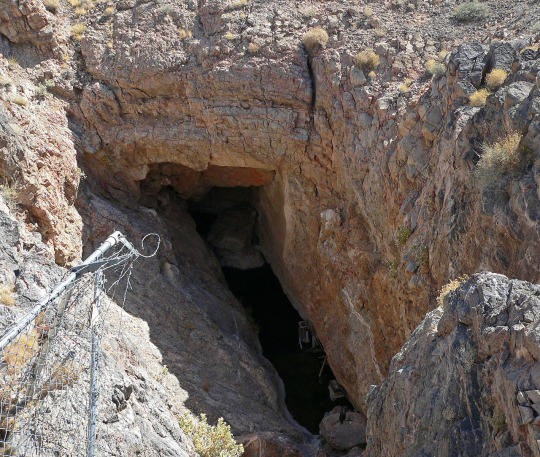
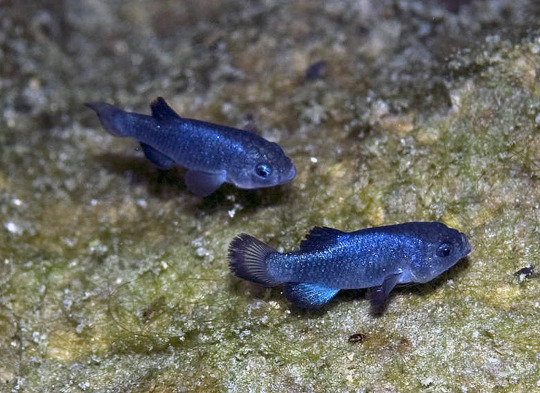



(reposting as I am unable to reblog the original.)
requested by @kodicraft
🔶 Rating: Partially Reliable 🔶
The Devils Hole is home to the endangered Devils Hole Pupfish.
From the National Park Service's page on Devils Hole: 'Devils Hole--a detached unit of Death Valley National Park--is habitat for the only naturally occurring population of the endangered Devils Hole Pupfish (Cyprinodon diabolis).'
The existence of the pupfish does prevent the pumping of groundwater in the area, after a legal battle. I am not sure this would apply to all mining.
From a High Country News article on the pupfish: 'The Cappaert case went all the way to the U.S. Supreme Court, testing the power of the Antiquities Act and the weight of the new Endangered Species Act. In 1976, the High Court affirmed the federal government’s right to maintain water levels sufficient to support the pupfish, even at the expense of water rights held by nearby ranchers.'
The habitat of this fish is incredibly small. However, it is slightly larger than suggested, as the fish swim at least 20m deep; the rock shelf referenced is the only place where the fish feed and spawn in the wild.
From the same National Park Service page: 'Although pupfish have been found as deep as 66 feet (20 m), the fish forage and spawn exclusively on a shallow rock shelf near the surface, feeding on the algae and diatoms found there.'
It is true that multiple conservation attempts have failed. Previous attempts to breed or crossbreed the fish have not been successful.
From a National Park Foundation article on the pupfish: 'Despite past efforts to create a similar artificial platform for the pupfish, as well as attempts to breed Devils Hole pupfish and hybrids in captivity, this small ledge remains the sole spawning and feeding shelf for the fish.'
I have not been able to find any references to 'assassination attempts'. One individual did threaten to pour pesticide into Devil's Hole, but it seems this was never attemped. If anyone can find anything on this, please let me know, but in the mean time I have to say this claim is unsubstantiated.
From a High Country News article on an incident of tresspassing and the pupfish: 'A Pahrump newspaper editor even threatened to throw the pesticide Rotenone into the sunken cave to “make the pupfish a moot point.”'
The fencing was initially installed after two people drowned, not after an assassination attempt. Later, more fencing and security was installed after three men drunkenly tresspassed and killed a pupfish.
From the same National Park Service page: 'Subsequently, the Hole was fenced after two divers drowned in its water.'
From a High Country News article on the incident of tresspassing : 'Since the incident, Devils Hole has become an even more formidable fortress. The Park Service capped its towering fences with additional barbed wire. The public can only view the sunken cave from a distance now, more than 20 feet above it. And inside the fenced viewing area are even more cameras, motion sensors and “No Trespassing” signs.'
There is a breeding program at Ash Meadows Facility, where scientists have attempted to mimic the natural habitat of the pupfish.
From a National Geographic article on the breeding attempts: 'And when they built the Ash Meadows facility, the scientists tried to create a mirror image of Devil’s Hole, which meant bringing in water, substrate, and algae from the natural environment.'
It is possible that a different research/breeding facility is being referred to, but the Ash Meadows Facility does not seem to have a secret location. In fact, the facility is open to visitors, according to their website.
I wont attempt to fact check whether the cave is haunted, but I can confirm that at least two people drowned and were not recovered from Devils Hole. Whilst the cave is not truly bottomless, the bottom has not yet been found.
From an SFGATE article on Devils Hole: 'When the bottom of Devils Hole is one day found, the skeletons of two brothers-in-law may finally be recovered, fathoms below the frolicking pupfish.'
The breeding program has been more successful in recent years. This may be due to the discovery that diving beetles were eating the eggs and larvae, and the beetle population in the artificial environment being controlled. (This fact was not included in the original post, but I thought it was cool.)
From a National Geographic article on the breeding attempts: 'As Feuerbacher watched the infrared footage, which can visualize objects in the dark, a tiny pupfish larva smaller than a peppercorn flitted into the camera’s frame. This was big news. When a population gets as low as that of the pupfish, every animal—wild or captive, larva or adult—is critical to the species’ survival.
“I was pretty excited to see there was reproduction going on in the tank, and I just watched it for a little bit,” says Feuerbacher, a fish biologist with the U.S. Fish and Wildlife Service. “Then I saw a beetle swim past.”
It began circling the fish, and closing in.
“Then it just dove in and basically tore the fish in half right while I was watching,” says Feuerbacher.
[...]
During the first beetle collection, facility manager Jennifer Gumm says they caught 500 beetles in three hours. And on the very next pupfish egg collection, which is done by leaving out pieces of carpet that the fish like to lay their eggs on, the team retrieved close to 40 pupfish eggs.
Before this, they had been lucky to find four or five pupfish eggs during a refuge collection. Usually, it was zero.'
3K notes
·
View notes
Text

There are four types of fish scales!
Cycloid scales are thin, overlap, and flexible. They're found on primitive teleosts (like minnows and carp).
Ctenoid scales have small, backwards pointed scales (known as cterns) make the fish more hydrodynamic and faster. They're found on Advanced Ctenoids (like perch and sunfish).
Ganoid scales are thick, diamond-shaped, and mostly non-overlapping. They're found on Chondrostei (like sturgeons and paddlefish).
Placoid scales are spikey and tooth-like with nerves. These are found on Chondrichthyes (like sharks and rays).
Ichthyology Notes 3/?
#science#biology#animals#ocean#wildlife#marine ecology#animal facts#marine life#fun facts#marine biology#fish#fish facts#fins#fish fins#scales#fish scales#ichthyology#fish anatomy#anatomy#minnows#carp#perch#sunfish#sturgeons#paddle fish#sturgeon#paddlefish#shark#sharks#rays
12K notes
·
View notes
Text

12K notes
·
View notes
Text
The long wavelengths of the light spectrum—red, yellow, and orange—can penetrate to approximately 15, 30, and 50 meters (49, 98, and 164 feet), respectively, while the short wavelengths of the light spectrum—violet, blue and green—can penetrate further, to the lower limits of the euphotic zone. Blue penetrates the deepest, which is why deep, clear ocean water and some tropical water appear to be blue most of the time. Moreover, clearer waters have fewer particles to affect the transmission of light, and scattering by the water itself controls color. Water in shallow coastal areas tends to contain a greater amount of particles that scatter or absorb light wavelengths differently, which is why sea water close to shore may appear more green or brown in color.
Follow @scienceisdope for more science and daily facts.
Video credit: Kendall Roberg
48K notes
·
View notes
Text
Why's research about allergies specifically so systemically infested with the most garbage articles that do sketchy bullshit with citing their sources 😭
This article claims that the development of food allergies is linked to these things, explaining the rapid increase in food allergies:
Industrialization
Urbanization
Widespread sanitation programs
Antibiotics use
Highly processed diets
Physical inactivity
I looked at the citation attached to this list, it's number 13 if you want to look at it, and here's what the source said about each of these things
Industrialization- Supported by implication (air pollution is connected to allergies)
Urbanization - Supported (air pollution, lack of exposure to sources of beneficial microbiome biodiversity)
Widespread sanitation programs - Unsupported, no mention of cleanliness, hygiene, or sanitation standards in source
Antibiotics use - Supported (beneficial bacteria killed by antibiotics)
Highly processed diets - Possibly alluded to through the mention of dietary fiber being important for gut bacteria, but this is a stretch.
Physical inactivity - Unsupported, not mentioned
Then I found another article that does the SAME FUCKING THING (It said that 'progressively cleaner environments' were a likely cause of allergy development. The source it cited—written by the guy that PROPOSED the hygiene hypothesis—said that studies conducted for the 'hygiene hypothesis' showed no correlations, but that it was still 'biologically plausible.')
AAAAAAAAAAAAAAAAAAAAA
3K notes
·
View notes
Text
On this day in 1936, the last known thylacine (Thylacinus cynocephalus) died at the Hobart Zoo in Tasmania. The animal’s passing marked the extinction of its species. Also known as the “Tasmanian wolf,” the thylacine was Australia’s largest marsupial predator. It sported a dog-like form, with distinctive stripes, and a jaw that could open up to 80 degrees—one of the largest gapes of any mammal.
The thylacine fed primarily on small mammals and birds. Nocturnal and shy, it was seldom seen by humans. However, beginning in the 19th century, settlers believed the animals threatened their livestock and, spurred on by a bounty offered by the government, hunted them relentlessly. Attempts at protecting the species in the wild came too late: Despite numerous unconfirmed reports of sightings in recent decades, no definitive sightings have occurred since the 1930s.
#science#museum#nature#natural history#animals#fact of the day#did you know#thylacine#extinction#animal facts#cool animals#australia#tasmania#museum collections#conservation#on this day#amnh#on this date
3K notes
·
View notes